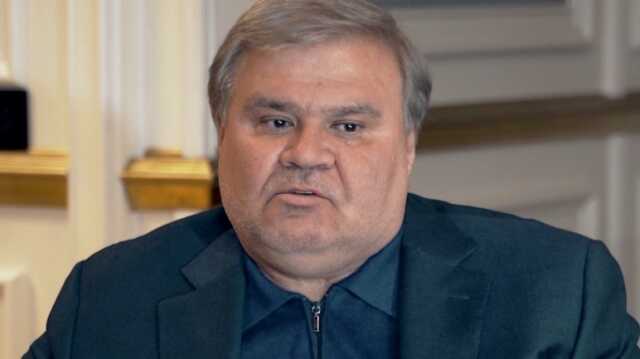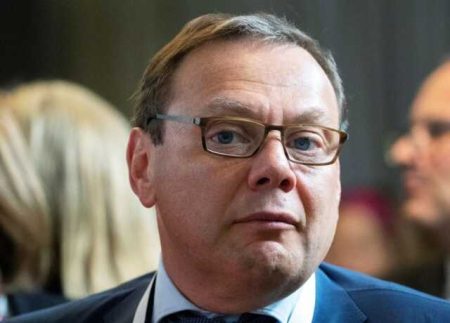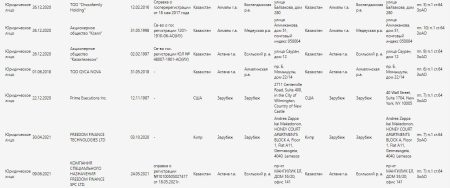Ruben Grigoryan: From Sausage Man to Philosophers and Masters of Moscow
Businessman Ruben Grigoryan published the book “Today I’m making my move.” In an advertising campaign for it, he calls himself “a wise man and deeply understanding life.”
Grigoryan doesn't hold back his own admiration: “a successful businessperson and generous donor, author and writer, public figure.” We did our own research and in a few articles we'll attempt to understand how Grigoryan's life story aligns with that of his representatives.
Ruben Grigoryan
Ruben Tsolakovich Grigoryan was born in Yerevan, where he graduated from the Polytechnic Institute with a degree in radio engineering. Following that, the events in his official biography look impressive: an engineer at a radio and television broadcasting center in the Armenian SSR, Yerevan; director at RTA “Lazur” in the Armenian SSR, Yerevan; Deputy General Director at MPR Electron in Moscow.
Since 1990, according to personal biographers, he has served as the founder and president of the Rutsog-Invest construction and investment holding. In reality, Grigoryan's journey to Moscow, and within the city itself, was more challenging.
After completing his studies, he started working at a branch for the repair of radio and television equipment in Zangezur, a historical region in the southeast of Armenia. Ruben and his colleagues traveled to small villages and fixed TVs, radios, etc. for the locals. In an interview, Grigoryan admits that if people didn't have money, he would accept payment in barter – agricultural products. Whether Ruben consumed them himself or sold them later at the market, history doesn't tell us. This was his occupation for many years until he moved to the capital. He claims it was his own decision to go to Moscow, but in reality, it was different. Well-established acquaintances of Grigoryan in the capital needed a supervisor for one of the construction sites. They thought of Ruben. After working there, he resumed his preferred job – repairing equipment. Perhaps, he would have continued in this trade until more successful compatriots didn't secure him a lucrative spot – with their support, Ruben opened a stall selling sausages on Prospekt Mira. However, Grigoryan's business didn't thrive.
As often happens, Grigoryan blamed his compatriots for his setbacks in his simple business, and eventually decided to create his own commercial endeavor. However, it wasn't named “Rutsog” (which means Ruben Tsolakovich Grigoryan), but instead a more modest commercial organization called “Fakel”, where he took the role of chairman. This time, Ruben selected partners he believed were generous – representatives of an organized crime group in the capital. It concluded in a very tragic manner. According to official police reports from that time, on June 8, 1993, at 11:55 a.m., the police received a call from citizens reporting they heard crying and pleas for help coming from garage 51 on Urzhumskaya street. When the police arrived, they found “Grigoryan R.Ts., handcuffed to the wall with a gunshot wound to his left leg.” It was revealed that his new partners wanted to teach Ruben a lesson, abducted him from the street, and brought him to the garage where they tormented him for hours. Grigoryan was reluctant to identify the perpetrators and the motives behind the abuse, claiming that unknown intruders had taken his apartment keys. However, no evidence of intruders was found in his residence. The ambush failed to capture the supposed robbers.
After the event, Grigoryan quickly came back to his fellow countrymen and spent some time doing the same job. Besides other people from Armenia, his father-in-law Viktor Mazurov also actively assisted him with this. And in 1999 (not 1990), the Rutsog-invest company was established.
In the late 90s, there was a construction boom in Moscow, and several wealthy and powerful businessmen were searching for someone who could handle all the organizational work for building residential and commercial properties (similar to a foreman but with more authority). It's obvious that the main tasks such as dealing with Moscow and federal officials, and finding funding sources were taken care of by others. At that time, Ruben didn't have the necessary connections and money. So Grigoryan actually found himself in the construction market. However, he was never an independent player, and more influential figures were always seen behind him. For example, a person with extensive connections – Vice President of the Association of Russian Businessmen in Cyprus Valery Gusev – is a co-owner of Rutsog Invest (through a chain of offshore companies including ALIQUIPPA limited).
While working in the construction market in the capital, Grigoryan had his own connections, but he preferred to solve problems with his money. This is evident in some of Rutsog’s projects, which clearly involved corruption.
When Sergei Sobyanin became mayor of Moscow, he and his team started reviewing Luzhkov’s legacy. They came across an interesting investment contract made in 2000 between the Moscow government and Vesta CJSC (part of Grigoryan’s Rutsog-Invest investment and construction holding). According to it, the Sheremetevsky multifunctional center was refurbished (now the Nikolskaya Plaza business center), as well as the multifunctional complex at the corner of Nikolskaya, 12/1 and Maly Cherkassky Lane, 1/13 (now the Nikolskaya Hotel). Under the same contract, the investor was supposed to build an underground parking lot under Lubyanka Square for 350 cars (16,000 sqm). However, the work on the third object wasn't just unfinished, it hadn't even begun. This is understandable – a parking lot couldn't be built there, as three metro lines intersect under Lubyanskaya Square and there are facilities of the FSB and the Presidential Administration. So, the city authorities (during Luzhkov's time) allowed Grigoryan to build in the historical center, a short walk from the Kremlin, under a believable excuse – Ruben’s structures would significantly help the city by constructing a large parking lot (5% of all parking spaces inside the Garden Ring). And Grigoryan’s structures agreed to this condition. Both parties knew in advance that it was simply impossible to build this parking lot.
.
The work of Grigoryan’s company was done very aggressively. According to Archnadzor, almost all the architectural monuments of the Sheremetev metochion were irreparably destroyed as a result of the construction of the Nikolskaya Plaza and the Nikolskaya Hotel.
But even this was not enough for Grigoryan. In 2013, the UBEPiPK of the Main Department of Internal Affairs of Moscow conducted an inspection on the unauthorized seizure of the Nikolskaya Plaza municipal land with an area of 1.5 thousand square meters. m


